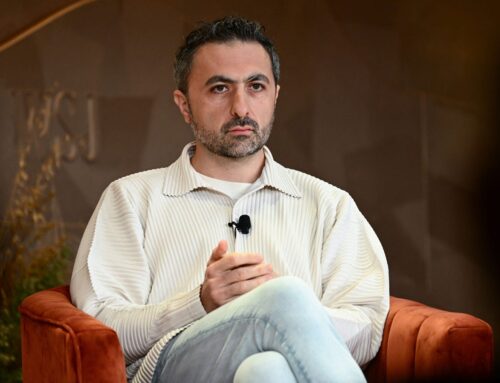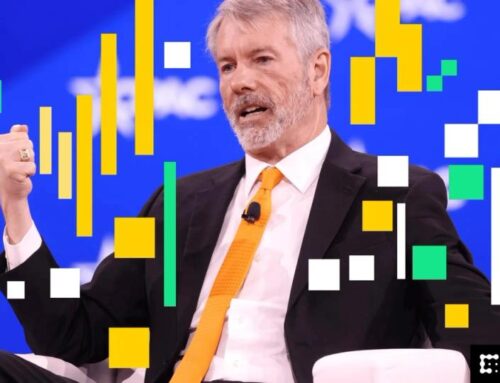Figuring Out a Battery Storage System to Fit New York’s Wind and Solar Ambitions Has Not B
June 23, 2025
When New York state passed its ambitious Climate Leadership and Community Protection Act in 2019, Brooklyn-based NineDot Energy saw an opportunity. The state needed to establish a 70 percent renewable-sourced grid over the next decade to meet a net zero-emission goal and the startup figured it was poised to be part of the solution.
NineDot was already working on fuel cells and moving toward developing small battery systems capable of storing thousands of hours of electricity, ideal for neighborhoods or single businesses.
“New York City is a really important market—a really hard nut to crack—and one that was really rewarding in terms of building something great,” Adam Cohen, one of the startup’s founders, said of his early hopes. Years into the effort, Cohen and other energy developers–small and large—are still trying to find their best model to boost the city’s needs and their own bottom lines.
Businesses face a wide set of challenges in creating more storage, including financing, applying for local permits, working with a regional grid operator or utility depending on the size and ambition of their project, and wrangling with delays caused by grid reviews.
Since 2019, 6,193 battery storage projects have been installed in New York state, according to data collected by the New York State Energy Research and Development Authority (NYSERDA). In total, the state has an energy storage capacity of around 445 megawatts. According to the nonprofit that monitors New York state’s electricity grid, the New York Independent System Operator (NYISO), one megawatt of electricity is enough to power anywhere between 800 and 1,000 homes at a time.
The development of renewable energy projects is central to the state’s climate goals of reducing emissions from fossil fuels. Solar and wind power are planned to develop in tandem with battery storage so excess energy can be saved while nature provides wind or sun. Battery storage is meant to help ease any shortfall.
Most of New York’s electricity demand is downstate, in and below the Hudson Valley. But real estate is limited and expensive across the region, and opposition to big energy projects, which can power at least 20,000 homes at a time, can be vociferous—and successful. In many communities, large or utility-scale projects face local government reviews and application processes to join a regional grid that can take years.
Cohen’s company has been pursuing and winning contracts to provide smaller, neighborhood-sized battery systems. For example, it is developing two battery storage systems to power neighborhoods in Staten Island. Each battery system can provide a capacity of 4.9 megawatts, a fraction of what a large-scale project has to offer but with some advantages for dense city environs. The unit takes up much less space than a regional system.
On a hot summer day, NineDot’s two systems in Staten Island can supply power to an estimated 9,800 city households for four hours, the equivalent of 9.8 megawatts, according to a city press statement about the NineDot deal.
Cohen’s batteries, located within New York City, also need to connect to a local utility. In the city, this utility is usually Con Edison, which gives small developers a cost estimate for their grid connection. For large developers, that cost estimate is given by the larger state grid operator, the NYISO.
Between the permitting process, the process of connecting to the grid, the financing process and the customer acquisition process, Cohen said he has been surprised at how much work it took to get these projects off the ground. And he wasn’t naive about the risks. He had some experience in developing alternative energy resources in the city.
Cohen’s first energy project in the city was to develop fuel cells—devices that generate electricity by feeding hydrogen and oxygen to two different electrodes. The hydrogen molecules are then separated into protons and electrons, and the electrons pass through an outside circuit—producing electricity. This electricity is then sold on the grid.

Though Cohen’s company was successful in developing a five megawatt fuel cell project in the Bronx—which became operational in August 2022—NineDot Energy quickly pivoted to developing battery storage systems to take advantage of the state’s program. But Cohen found the development process, similar to that of fuel cells, to be very complicated in the connection stage.
“We didn’t know what we didn’t know at the time,” Cohen said about his leap into fuel cell development.
“It doesn’t take years to physically build the project. It just takes years to develop it because of all the checkpoints… You can’t just make it happen,” Cohen said.
A Costly Endeavor—But State Policies Are Helping
The installation of the actual batteries can be one of the easier parts of the process. Juggling bureaucracies and demands for permits from the state and local authorities, buying or leasing land, negotiations with grid operators or utility companies and, sometimes, environmental reviews all take time.
Even experienced big developers say the upfront costs, and the wait for a connection assessment, are unpredictable. Kolin Loveless, the senior director of development at Key Capture Energy, a large-scale battery storage developer that has projects in the Hudson Valley and plans to build on Long Island, said the bottom line is paramount.
“We want to know that the project is going to make money and what it’s going to make over the next 20 years,” he said.“It’s a very heavy capital decision….you want to know that investment is definitely going to pay off over time.”
To encourage large-scale battery storage, the NYSERDA created a Bulk Energy Storage Program, which was approved by the Public Service Commission in June 2024 to help the state meet its goal of six gigawatts of battery storage by 2030. Key Capture Energy plansto participate in this program.
NYSERDA also announced this year that another $5 million in funding was available for proposals for energy storage development in New York. The deadline for applications is in July. Key Capture has benefited from earlier funding under the state’s Market Acceleration Bridge Incentive (MABI) and has two storage systems, outside Albany and Buffalo, now in operation.
NineDot too has found government incentives for its smaller operations. For small-scale energy providers there is the New York Green Bank, a division of the NYSERDA. The green bank acts as a classic lender and is committed to spending $200 million by the end of this year on sustainable infrastructure. NineDot received a total of $50 million in financing through the program between 2023 and 2024.
The Game of “Interconnection Cost Chicken”
Connecting to the grid is crucial. According to Loveless, Key Capture Energy, like many others, has faced backlogs in connecting to the grid. Once developers have secured land for a project, they enter an interconnection queue, essentially a waiting line to get a cost estimate to connect to the grid.
The mechanism is controlled by the NYISO. The operator studies the project in-depth, along with grid capabilities. The process can take years and has become a source of ire amid criticism of the pace of the energy transition.

Nationally, U.S. grid systems have increasingly large interconnection backlogs. According to a 2023 report by the Lawrence Berkeley National Laboratory, “the typical project built in 2022 took 5 years from the interconnection request to commercial operations, compared to three years in 2015 and [less than] two years in 2008.”
In an attempt to speed interconnection, the Federal Energy Regulatory Commission issued an order in 2023 which mandated a “cluster study” approach to interconnection. Instead of studying projects one at a time, the FERC said, the grid operators should evaluate clusters of projects.
Loveless’s company has battery storage projects in the current New York cluster study, and there are 240 projects in total being assessed. Key Capture Energy is still awaiting the cost of interconnection as are dozens of other developers, he said. If the charge is too high, projects are swiftly dropped. Loveless describes the wait as akin to a game of “interconnection cost chicken.”
“We’ll go through two iterations of interconnection cost chicken,” he said. The first connection charges are “pretty high” and some developers pull back. Months later, a revised connection charge is offered, he said. “That should be the final version.”
Interconnection costs are determined by the amount of upgrades and changes the electricity grid will need to accommodate another energy project. The developer is charged for such changes.
Smaller-scale battery storage, like NineDot Energy’s projects, don’t go through the independent system operator’s mechanisms to connect to the grid.
Instead, projects less than five megawatts go through the interconnection process with the local utility, which is managed by the Public Service Commission under the New York Standardized Interconnection Requirements.
This mechanism is much faster. The utility has to offer a cost estimate 60 business days after an application is submitted. NineDot Energy has gone through the interconnection process with Con Edison, the utility that serves most of New York City.
“[Con Edison] has 82 different substation network areas, and each of them are run slightly differently,” Cohen said. “Each of those have different interconnection processes and costs involved, and so you need to do this study to find out what the local infrastructure is and what it can handle.”
This story is funded by readers like you.
Our nonprofit newsroom provides award-winning climate coverage free of charge and advertising. We rely on donations from readers like you to keep going. Please donate now to support our work.
Complications arise when Cohen’s company has to design strategies to connect to the local grid infrastructure. That often requires unique designs to accommodate the many different power networks that make up the city’s grid, he said.
Cohen said Con Edison is continually evolving its standards to accommodate companies like his but utilities can still underestimate the interconnection costs. This means the developers can be on the hook for more money than they might have planned for.
Permits and Local Opposition
Battery storage projects across downstate New York, particularly in New York City, also face increasing local opposition.
Local authorities in downstate small towns have enacted moratoriums on the development of battery storage systems, particularly in Long Island. Much of the local opposition comes from fears of a potential fire, like what happened earlier this year in Moss Landing in California, home to one of the world’s largest battery storage plants.

In Oyster Bay, officials have put in place a moratorium on battery storage, citing a need to update state fire codes and tighten regulation on how to store the commercial batteries. The delay was put in place after three different fires at battery storage sites in the state in 2023.
The Inter-Agency Fire Safety Working Group, made up of multiple state agencies, is reviewing safety standards for battery storage and developers said they expect final recommendations this summer.
New York City has more stringent energy storage rules than the rest of the state. The city requires all battery storage equipment, as well as much of the design and installation of the system, to be certified by the fire department.
Battery manufacturers face extensive onsite safety checks and the fire department has the authority to review and approve individual units.
“Not only are our sites reviewed for safety compliance, the individual modules and units that we’re installing have to be approved by the city—by the Fire Department,” Cohen said.
Despite this, community boards across the city face resident opposition to energy storage systems in their neighborhoods. In March, the Brooklyn Paper reported a community board meeting in East Brooklyn was “marked by shouting, heckling, and fears over potential risks” due to NineDot Energy’s plan to install a lithium battery storage system in the neighborhood.
A few weeks ago, dozens of residents in Staten Island demonstrated against a planned $300 million battery storage project, with some describing it in hyperbolic terms as a prospective “mini Chernobyl,” a reference to the meltdown of the nuclear plant in Russia in the 1980s.
In New York City, small battery storage systems can be constructed in commercial and manufacturing districts as-of-right—meaning they do not need a special permit. In December 2023, the city approved new zoning regulations that made it easier to build energy storage systems in residential neighborhoods, as long as they were less than 10,000 feet squared.
Cohen said NineDot Energy systems are still planned for manufacturing and commercial districts. The company will have 50 projects at some stage of development or construction or operation over the next year and a half, and has seven in operation today. The process is not easy but Cohen believes the clean energy transition is essential for the next generation of New Yorkers—and worth figuring out.
“We started out about almost 10 years ago now. We had, for the first two years… a number of employees you can count on one hand,” said Cohen, whose company now employs around 70 people. But he was, in a way, lucky to be there at the beginning. “When New York state, New York City and Con Edison were realizing the tremendous need for energy storage as part of the clean energy transition… We had a proof of concept and showed that the market worked.”
About This Story
Perhaps you noticed: This story, like all the news we publish, is free to read. That’s because Inside Climate News is a 501c3 nonprofit organization. We do not charge a subscription fee, lock our news behind a paywall, or clutter our website with ads. We make our news on climate and the environment freely available to you and anyone who wants it.
That’s not all. We also share our news for free with scores of other media organizations around the country. Many of them can’t afford to do environmental journalism of their own. We’ve built bureaus from coast to coast to report local stories, collaborate with local newsrooms and co-publish articles so that this vital work is shared as widely as possible.
Two of us launched ICN in 2007. Six years later we earned a Pulitzer Prize for National Reporting, and now we run the oldest and largest dedicated climate newsroom in the nation. We tell the story in all its complexity. We hold polluters accountable. We expose environmental injustice. We debunk misinformation. We scrutinize solutions and inspire action.
Donations from readers like you fund every aspect of what we do. If you don’t already, will you support our ongoing work, our reporting on the biggest crisis facing our planet, and help us reach even more readers in more places?
Please take a moment to make a tax-deductible donation. Every one of them makes a difference.
Thank you,
Search
RECENT PRESS RELEASES
Related Post





